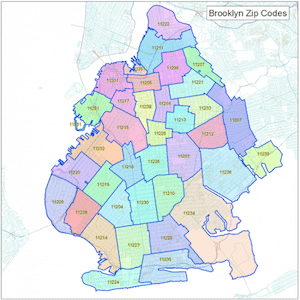
Get a Free Quote Today!

Mold Remediation Services In Brooklyn, NY
Mold is a serious matter! The presence of black marks on your walls or signs of water damage could signal a mold issue. It’s crucial to understand that mold thrives rapidly under ideal conditions, so remain vigilant for additional signs to prevent a full-blown infestation. Mold can trigger a myriad of health complications, ranging from respiratory problems like asthma to neurological conditions, including cognitive impairment or even Alzheimer’s disease.
| Service | Description | Benefits | Service Area |
|---|---|---|---|
| Mold Remediation | Comprehensive mold remediation services in Brooklyn. Our skilled team employs effective techniques to eliminate mold, ensuring a safe and healthy environment. | Mold-free space, Improved indoor air quality, Property value preservation | Brooklyn, NY |
| Mold Inspection | Thorough mold inspection service in Brooklyn. Our professionals conduct detailed assessments to identify mold issues, enabling informed decisions and timely action. | Early detection, Informed choices, Peace of mind | Brooklyn, NY |
| Mold Removal | Expert mold removal in Brooklyn to restore your property. Our dedicated specialists follow industry standards, eradicating mold and preventing its return. | Healthier living environment, Long-term protection, Property restoration | Brooklyn, NY |
Your health is a valuable and important thing
Mold is omnipresent. It’s likely that you’ve been cohabiting with mold without even being aware of it. These minute organisms thrive in our surroundings, and can even inhabit the human body. It could be lurking on a damp towel left out or hidden between furniture where crumbs might have fallen during dinner. Mold spores are ubiquitous – they are found outdoors as well as indoors, and can easily affect humans who have compromised immune systems due to age, illness, or injury.
Mold Remediation In Brooklyn, NY
At Crown Mold Specialists, we understand the paramount importance of protecting your home or office from the unwelcome presence of mold. With our comprehensive mold remediation services in New York, we not only help you avert potential mold-related issues but also provide you with the peace of mind that comes with knowing your living or working environment is safe, healthy, and mold-free.
Mold growth can occur in various areas of your property, including walls, ceilings, floors, and even within ventilation systems. It thrives in damp and humid conditions, making it a persistent and potentially harmful intruder. By utilizing our professional mold remediation services, you can effectively address mold issues and restore the integrity of your living or working space.
Our mold remediation process begins with a thorough assessment of your property. Our highly trained experts meticulously inspect the affected areas, identifying the extent of the mold growth and any underlying causes, such as water leaks or excessive moisture. We utilize advanced techniques and equipment to ensure a comprehensive evaluation, leaving no stone unturned.
Once we have assessed the situation, we develop a customized mold remediation plan tailored to your specific needs. Our team formulates effective strategies to contain and eliminate the mold, preventing its further spread and recurrence. We employ industry-leading practices and employ safe and environmentally friendly methods to address the mold infestation, ensuring the health and well-being of our clients and their surroundings.
During the mold remediation process, our skilled technicians work diligently to remove the mold from affected areas. We utilize specialized equipment, such as HEPA (High-Efficiency Particulate Air) filtration systems, to capture and remove mold spores from the air, reducing the risk of cross-contamination. Our team employs appropriate containment measures to prevent the mold from spreading to uncontaminated areas, ensuring a thorough and targeted remediation process.
In addition to removing the mold, we also address the root causes to prevent future mold growth. Our experts identify and rectify any sources of moisture or water intrusion, such as repairing leaks, improving ventilation, or implementing proper drainage systems. By eliminating the favorable conditions for mold growth, we significantly reduce the risk of its reappearance, allowing you to enjoy a mold-free environment for years to come.
Why choose us in mold Remediation In Brooklyn, NY?
- Rest easy knowing that we will address all your questions and concerns throughout the entire process. We’re always at your service, so feel free to raise any queries or issues you might have.
- We’re not afraid of getting our hands dirty. If there’s a task that needs to be done, just let us know, and we’ll take care of it in no time.
- Understand that mold is a severe issue with potential long-term impacts on your health. That’s why we’re the only company to employ certified chemicals, and we prioritize odor control to eliminate any risks associated with this harmful pathogen.
- Whenever you need a professional well-versed in every aspect of mold remediation in New York, catering to both large commercial projects and smaller residential ones, look no further than us.
- We offer a wide range of additional services, including water damage restoration, mold removal, and more.
Frequently Asked Questions
old remediation refers to the process of identifying, containing, and removing mold from a property. It involves addressing the root causes of mold growth, such as moisture issues, and implementing effective strategies to eliminate the mold and prevent its recurrence. Mold remediation is necessary to safeguard the health of occupants, prevent further damage to the property, and restore a safe and mold-free environment.
There are several signs that indicate the need for mold remediation in your Brooklyn property, including:
- Visible mold growth on walls, ceilings, or other surfaces
- Persistent musty odors, especially in specific areas or rooms
- Water damage, such as leaks, flooding, or plumbing issues
- Allergic symptoms, such as sneezing, coughing, or nasal congestion
- Discoloration or staining on walls or ceilings
- High humidity levels and condensation problems
- Previous history of mold issues or neighboring properties with mold problems
If you notice any of these signs, it's crucial to consult with a professional mold remediation company in Brooklyn, NY, to assess the situation and determine the necessary steps for remediation.
While some minor mold issues can be addressed by homeowners using DIY methods, it is generally recommended to hire a professional mold remediation company for larger or extensive mold problems. Professional mold remediation experts have the knowledge, experience, and specialized equipment to effectively handle mold removal, ensure thorough cleaning, and prevent cross-contamination. They can also identify and address underlying moisture issues to prevent future mold growth. Hiring professionals for mold remediation in Brooklyn, NY, ensures a safe and comprehensive remediation process.
The duration of mold remediation depends on various factors, including the size of the affected area, the extent of the mold growth, and the complexity of the remediation process. While small-scale remediation projects may take a few days, larger or more extensive mold remediation projects can take several days to weeks. The timeline also depends on the drying time required to eliminate moisture sources and prevent mold regrowth. A professional mold remediation company will provide you with a specific timeline based on the assessment of your property.
Mold remediation involves handling and removal of mold, which can potentially release mold spores and other allergens into the air. Therefore, it is essential to follow proper safety protocols during the remediation process. Professional mold remediation companies in Brooklyn, NY, adhere to industry standards and employ safety measures to protect both their workers and the occupants of the property. They utilize containment strategies, personal protective equipment (PPE), and specialized cleaning methods to minimize the risk of exposure and ensure a safe environment throughout the remediation process.




